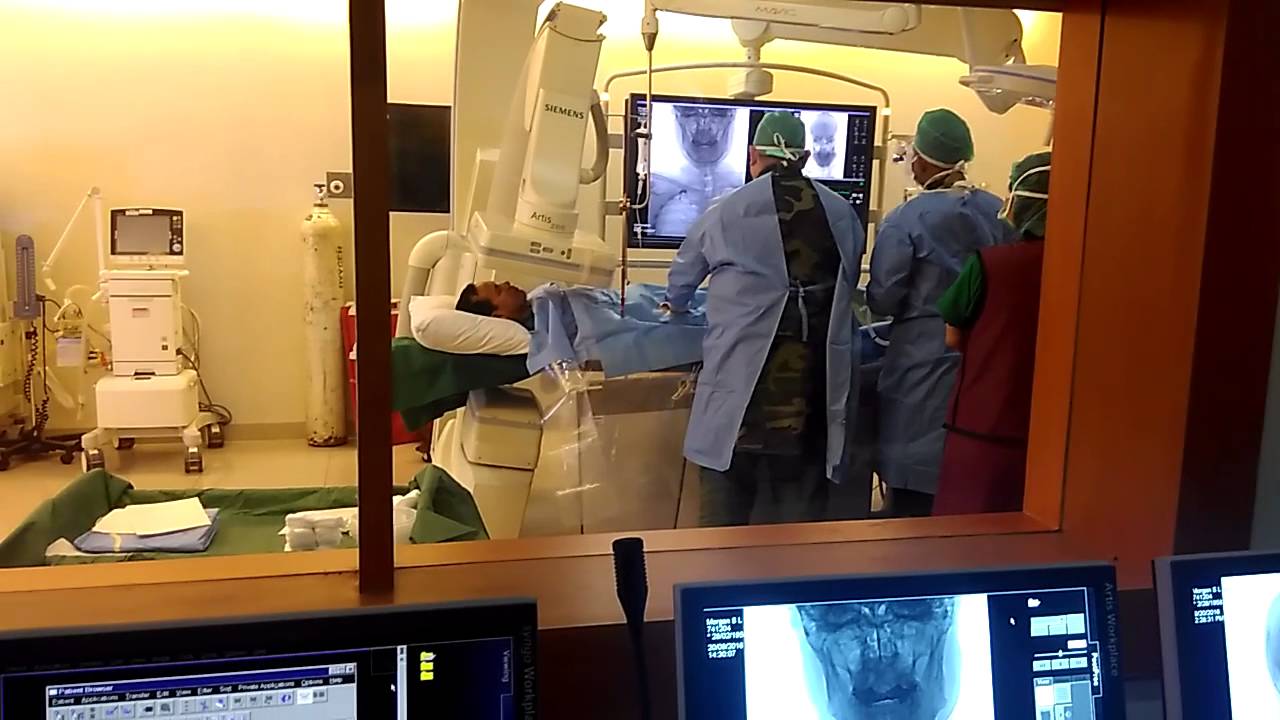
Stroke, or heart attack, can be a debilitating disease. The patient might suffer from instant death, paralysis of the right sight of the body, or disturbances in speech. In Indonesia, most stroke patients who suffer from difficulty in walking and talking experience a significant improvement after receiving treatment from Dr. Agus Putranto Terawan, Sp. Rad (K). It is not magic. Dr. Terawan modifies a radiography examination method called DSA (Digital Subtraction Angiography), and turned it into a treatment.
DSA is an examination that provides images of the lumen (inner surface) of the blood vessels including the arteries, veins, and the heart chambers. These images are obtained using complex computerised X-Ray machines. A special contrast medium or ‘dye’ (high density clear liquid) is usually injected to make the blood supply to the legs, heart, and other organs easier to see.
Dr. Terawan said that this modified DSA method works on both ischemic stroke and hemorrhagic stroke patients. He initially modified DSA to lessen the radiation dose, which in turn gives less side effects to the kidney. Currently, almost all specialists in RSPAD (Rumah Sakit Pusat Angkatan Darat) Gatot Soebroto are trained to be able to do this procedure.
This achievement has earned Dr. Terawan, who is also the chief of RSPAD, an award from Hendropriyono Strategic Consulting (HSC). Besides having been used in hospitals all across Indonesia to treat thousands of patients, Dr. Terawan’s modified DSA method is also recognised worldwide. The method is also used in Augusta Hospital in Dusseldorf, Germany. Therefore, this award is an appreciation for his work as one of the nation's best doctors. It is also expected to be a stimulus for the people of Indonesia to produce more innovative work.
Not all patients are able to receive this particular method of treatment. It depends on the patient’s condition. A complete examination is necessary, therefore Dr. Terawan works with other specialists, including endocrinologists and internists. He aims to give a holistic, accurate, and safe treatment.
The procedure starts with a detailed brain examination using MRI. This aims to assess any kind of brain disorder. Because it involves the brain, this action is taken in great details. It involves neurologists, neurosurgeons, radiologists who specialised in perfusion, internists, and many more. The team work is needed to ensure the patient’s safety, mainly to minimise side effects.
The result of the brain examination determines the next course of action: classic DSA, modified DSA, or other techniques. Say the patient’s condition is suitable to be treated with modified DSA. Modification starts from lowering the radiation dose. The classic DSA requires a radiation dose above 300 ml grey and 100 cc of contrast, creating a heavy fluid overload in the kidneys. Meanwhile, the modified DSA only needs an average of 25 ml grey and less than 10 cc of contrast. Nevertheless, the resulting picture quality is similar to classic DSA.
DSA requires inserting a catheter into the blood vessel through the femoral artery in the groin area. The procedure will let the doctors see whether there is any blockage of blood vessels in the brain. This blockage can result in a disruption of blood flow, which will cause a dysfunction of nerves in your body. This condition often occurs in stroke patients. All patients must be monitored after the procedure, just in case a side effect occurs.
Currently RSPAD receives approximately 35 patients a day who require treatment with DSA method. The procedure is usually carried out within 25 minutes. The cost is relatively expensive, at about Rp 30-40 million. Many consider the benefits to outweigh the price.
Text by Denistya Sagita
Stock photos from Google Search Image
Source(s):
- https://www.mountelizabeth.com.sg/specialties/medical-specialties/brains-nerves/dsa
- http://health.detik.com/read/2015/06/15/071351/2942163/763/metode-cuci- otak-ala- dr-terawan-seperti-apa- sih
- http://www.beritasatu.com/kesehatan/282581-mengenal- modifikasi-dsa- cara-inovatif- tingkatkan-kualitas-otak- pasien-stroke.html